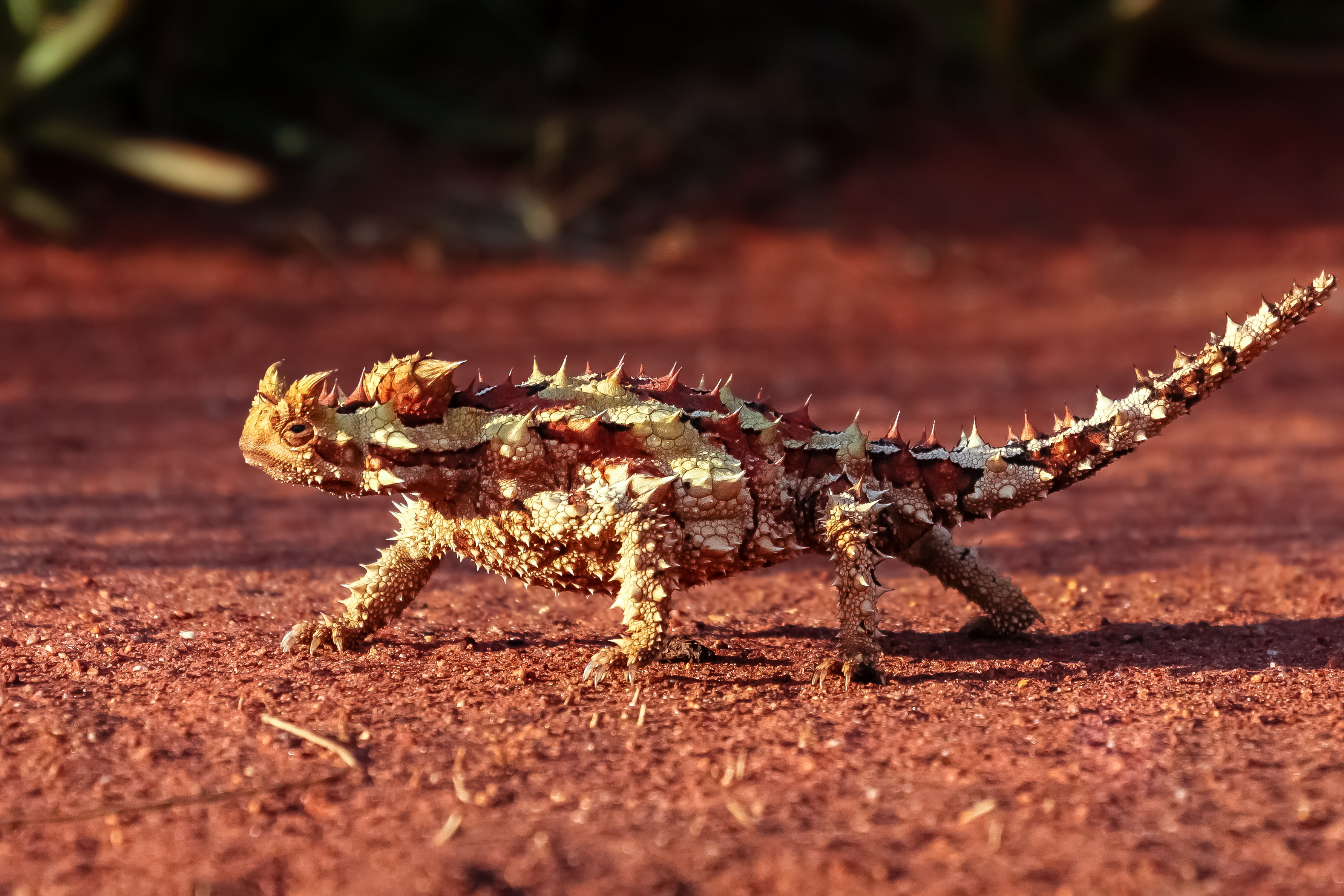Thorny devil, also called the thorny dragon or mountain devil, is a small Australian lizard named for its spiky appearance. The thorny devil is covered in spines of keratin, a tough material also found in human hair and nails. The thorny devil feeds exclusively on ants.

Thorny devils live in dry, sandy areas, including deserts and sandy grasslands and scrublands. They are found from the continent’s interior to the coast of Western Australia.
Thorny devils reach up to 8 inches (20 centimeters) in length. Their skin has a banded appearance. The skin color changes with temperature. Thorny devils may appear olive to brown in the cool of the desert morning and evening. They may appear pale yellow and red in the midday heat.
Thorny devils are solitary animals. The thorny devil is active in the daytime. It feeds by positioning itself near an ant trail, using its sticky tongue to slurp up ants. The devil’s teeth are specialized for shearing tough ant exoskeletons (outer coverings). A thorny devil may eat more than 1,000 ants in a day.
The thorny devil has a unique way of getting water in dry environments. Its spines are surrounded by a network of microscopic grooves. The grooves draw in dew and other moisture from the lizard’s surroundings through an effect called capillary action. The grooves channel this water to the lizard’s mouth.
Thorny devils are preyed upon by larger lizards and birds. The devil’s spines may help to discourage predators. The animal can also puff itself up with air when threatened. The thorny devil walks with a slow, jerky movement that is thought to confuse predators. A large knob on the lizard’s neck may also confuse predators, appearing as a false head.
Thorny devils are active in the spring and fall. They take refuge in underground burrows during the hottest months of summer and the coldest months of winter. Thorny devils mate in the late winter and early spring. The female lays 3 to 10 eggs in a burrow 12 inches (30 centimeters) deep. The eggs hatch in three to four months. Thorny devils can live for about 20 years in the wild.
